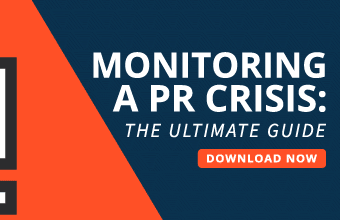A public relations crisis can strike your brand at any moment, with little warning and no easy solution. From product recalls to social media gaffes, brands encounter crises every day. When these situations arise, your PR strategy needs to be fluid enough to react quickly and effectively. Fortunately, handling a PR crisis doesn’t have to be as stressful or difficult as it seems. Here are some things you should know that may help you pull through.
Identify the crisis
One of the biggest mistakes you could make is to not recognize a problem as a PR crisis when it is. Any event that threatens reputational damage to your brand should be taken seriously. A PR crisis is usually accompanied by a negative headline in the media and can cause a significant drop in sales and customer satisfaction. The issue could result from a major scandal or negative event that your company is associated with. It can also happen when the public comes to associate one of your brand’s core values (like sustainability or charitable giving) with something controversial or unethical. On top of this, a PR crisis could be caused when an external party attacks your company. Threats like cyber security breaches, lawsuits, or union disputes can easily trigger a larger problem. You should know what to look out for early on so you can react swiftly.
Plan in advance
One of the best things you can do to prepare for a PR crisis is to have an emergency plan in advance. This plan should detail how your PR team should respond to various scenarios, from product recalls to staff resignations. Most importantly, it should also detail what information should be disclosed and when. This plan should be regularly reviewed and updated to take into account any new risks you’re facing as a company. Also, a PR strategy can be costly, so you shouldn’t overlook finances. You might consider setting up a business account, budgeting, or even refinancing a mortgage so you can afford to handle whatever comes your way.
Communicate clearly
Once you’ve assessed the situation and chosen your next steps, it’s time to communicate clearly with the public. This means being open and honest with your customers, partners, and investors. You should be very careful with the language that you use: Words like “mistake” or “accident” can seem like admissions of guilt, whereas “situation” or “incident” are more neutral terms. You should also make sure that all of your communication channels are updated to reflect the most up-to-date information about the situation. This includes your website, social media channels, and any other places your brand is represented online. Be sure to remove any unneeded information and replace it with clear and concise statements about what happened.
Stay calm
When you stop and start thinking about the situation, you might be tempted to let your emotions get the best of you. However, you should try not to panic during a PR crisis. In most cases, panicking will only make the situation worse. It could also negatively impact the way your customers respond to the situation. Most importantly, you should try to remain calm for the sake of your team. If you appear to be unsure of yourself, your team members will likely feel unsettled and unprepared for what comes next. By remaining calm, you’ll help your team to feel more confident in their abilities and ready to take on whatever comes next.
Once the PR crisis has come to an end, it’s important to take some time to reflect on what happened. This includes reviewing the steps you took while handling the crisis, as well as the decisions you made along the way. This reflection is important because it will help you to identify any changes that need to be made to your PR strategy moving forward. Any dent in your brand’s reputation will be unpleasant to think about, but it could enable you to make improvements and grow as a professional.








